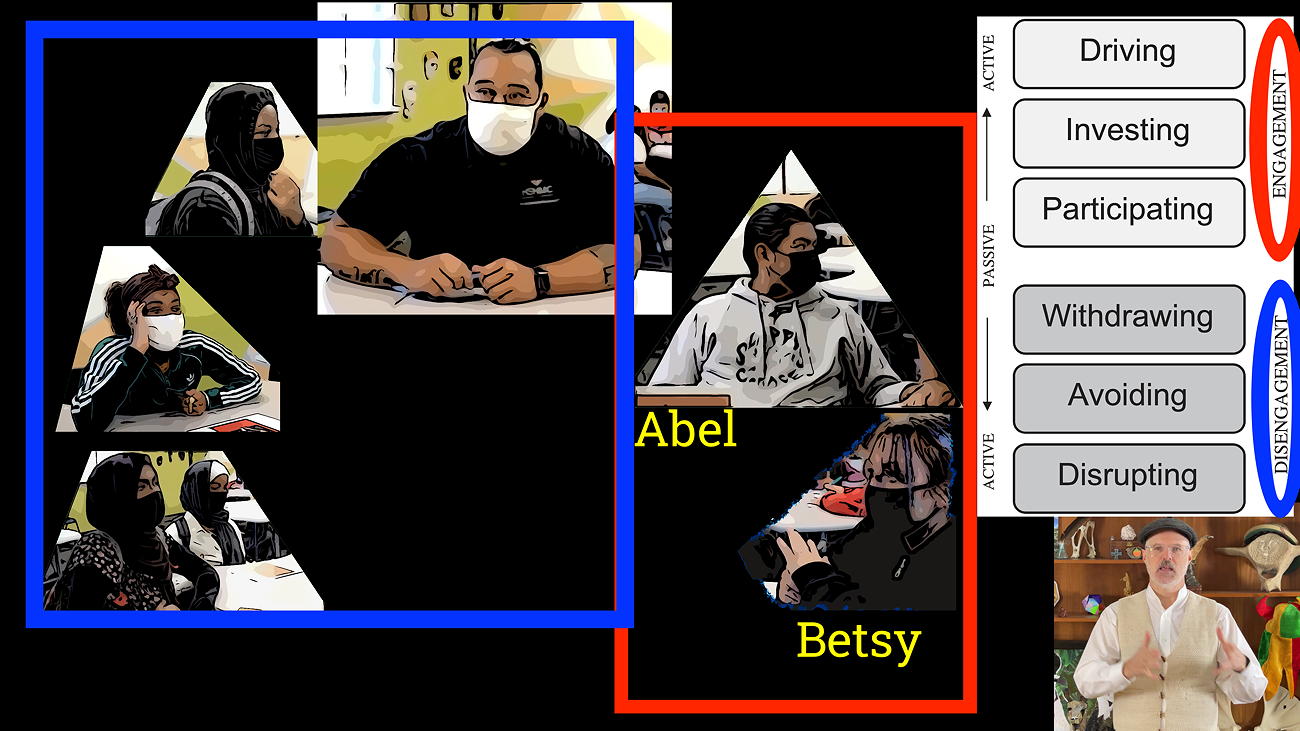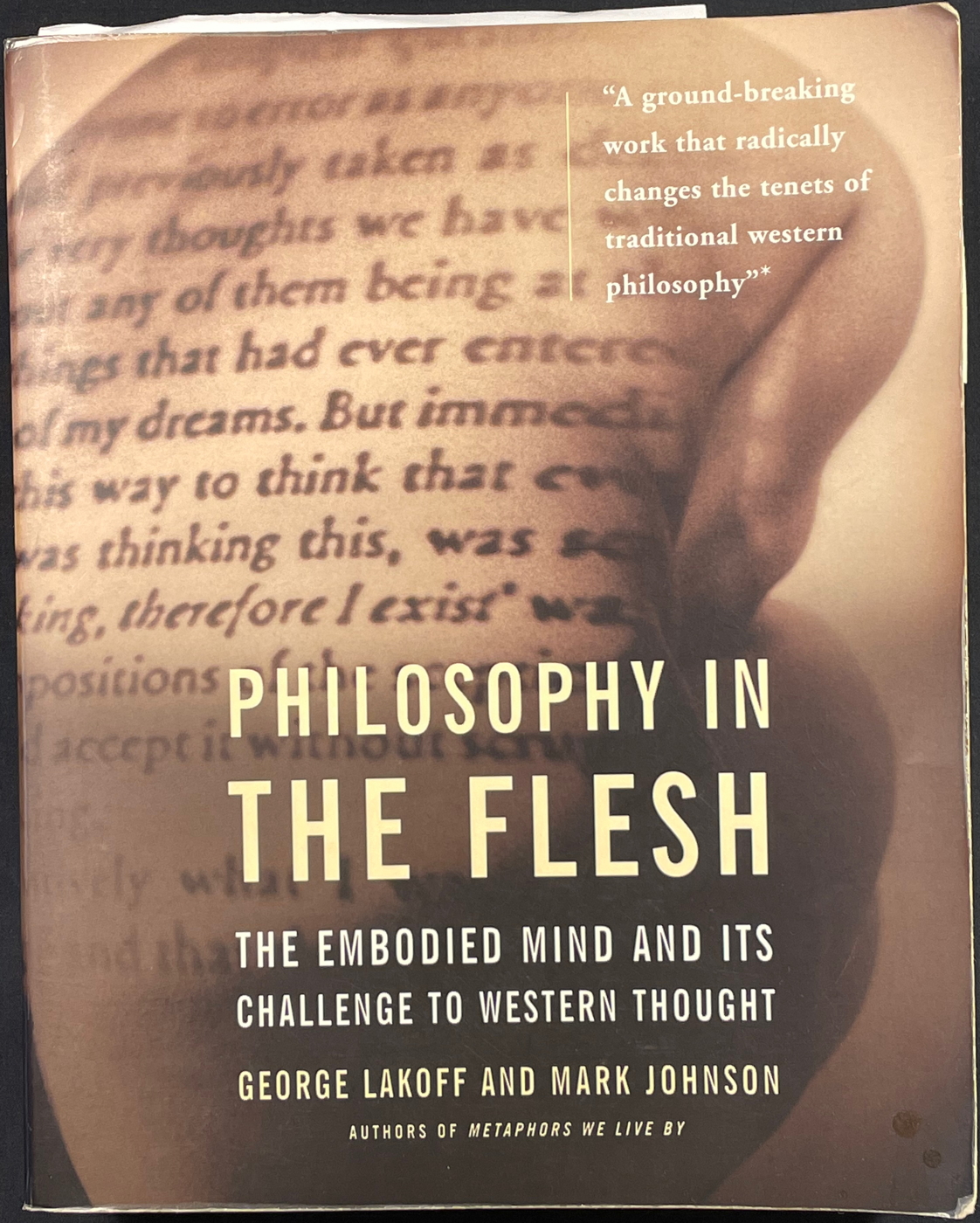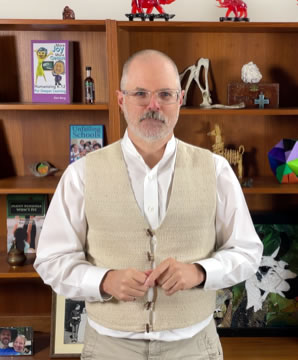How A Student Engagement Myth was Perpetuated in ASCD Educational Leadership Magazine
***Updated Version***
An engagement myth should not be perpetuated by ASCD's Educational Leadership Magazine.
In their Show & Tell column entitled “New Thinking About Student Engagement” Douglas Fischer and Nancy Frey claim that the 3-part model presented by James Appleton and his colleagues in 2008 is not adequate to guide practicing teachers in judging the quality of engagement in their students.
They are correct that the 3-part engagement model, by itself and without any updates from over a decade of new research, is not adequate to fully inform practice.
But, they advocate the use of a model that was not designed for, nor intended to, take its place.
Later, I propose an alternative model, derived from Self-Determination Theory, that might better serve classroom practitioners.
The Engagement Myth in Recent Research
The model they advocate using was published in 2020 and developed by Amy Berry.
The model is derived from a set of explicit statements about engagement and related concepts from interviews with just fifteen upper elementary teachers in Australia.
The research method she used was not intended to ascertain true statements about the phenomenon of engagement.
It was intended to find out what teachers express as the truth about those concepts, warts and all.
Berry explicitly stated that the model she developed should NOT be used to replace the existing empirically supported models of engagement.
Fisher and Fry seem to have ignored that statement.
After creating the first version of this critique I shared it with Fisher, Fry, and Berry.
In the ensuing correspondence they helpfully pointed out limitations in my perspective and I have adjusted accordingly.
This is my update to the original.
Engagement Myth in an Intuitive Continuum “Model”
My objection to using a simple continuum that reflects the intuitive truth of teachers’ conceptions is that, while it is a true reflection of intuitions about engagement, it is inadequate to the task that Fisher and Fry claim it can perform.
In short, using the intuitive continuum can lead to subtle biases towards teacher-centric compliance-oriented practice, which I suspect would be antithetical to their intentions.
Since I focus on psychology I am less well read in the education literature.
But I hope that education has rejected teacher-centric compliance-oriented practice in the classroom.
Hidden inside the intuitive continuum is the assumption that the only relevant goals are defined by the teacher’s instructional agenda.
Allow me to illustrate.
Engagement Myth In Imaginary Mr. Tutogi’s Class
Mr. Tutogi is the history teacher featured in the video that Fisher and Fry’s column was promoting.
An imaginary version of Mr. Tutogi’s class is our setting.
Imaginary Mr. Tutogi and some of his students observe Abel and Betsy exhibiting the signs of disrupting and avoiding, the two worst forms of disengagement on the intuitive continuum.
Using that continuum, we can expect the class to negatively evaluate them as classroom participants.
They have been set up to be corrected.
That, in itself, is not a problem.
Here are two scenarios that illustrate the potential for problems.
First, what if Mr. Tutogi has not been proactive in establishing a classroom consensus in which everyone explicitly agrees to the goals and expectations of classroom participation in lessons?
In this scenario it is not going to be clear that Abel and Betsy have had any agency in deciding the expectations that they are going to be accused of violating and pressured to conform to.
Lacking agency in the classroom tends to thwart primary (also known as basic) psychological needs, which is a problem.
Second, even if they did have full agency in deciding the expectations regarding participation, if Mr. Tutogi, his class, and the school institution more broadly, do not provide consistent support for the primary psychological needs of Abel and Betsy, then we can predict with a high degree of confidence that there will be a problem.
They will act according to the dictates of the implicit meta-goals of need satisfaction that have been biologically ingrained into them.
If the students’ needs are not being met then that fact will non-consciously negate their commitments to abide by the explicit goals and expectations of the class.

Engagement Myth vs. Engagement Science
This is where the nuances of a larger perspective on the scientific engagement model make an important difference.
In everything I’ve read so far in the literature I have yet to see an argument against the idea from Self-Determination Theory that primary need satisfaction is a necessary pre-requisite to both motivation and engagement (though, correct me if I missed it).
If Mr. Tutogi and his class are using only the intuitive model of engagement then they have no frame of reference to acknowledge that there are other legitimate goals that students will pursue UNconsciously.
There are two perspectives to consider: that of the supposedly misbehaving students and that of everyone else in the class who are complying with the teacher’s agenda.
From the point of view of a psychological understanding of the minds of the students Abel and Betsy, their behavior exhibits engagement.
BUT, it is engagement that is investing in and driving towards the satisfaction of their biologically determined primary psychological needs.
On the other hand, from the perspective of the goals determined by the instructional agenda, those same behaviors exhibit the characteristics of disrupting and/or avoiding the goals and expectations of the class.
The same set of behaviors can be legitimately seen as both engaged and disengaged at the same time.
And furthermore, we can legitimately assign the same contradictory evaluations to the behavior of everyone in the class besides Abel and Betsy.
From the perspective of Abel and Betsy the behavior of the rest of the class is effectively avoiding or disrupting their implicit meta-goals to satisfy their primary psychological needs.
In short, behavior can only be evaluated in relation to some kind of goal and individuals all have implicit meta-goals that can predictably undermine their pursuit of the goals of other individuals or a group.
Objecting to the Engagement Myth Continuum
My objection is that using the intuitive continuum model, in the absence of the nuances provided by a fuller understanding of engagement, can lead to the perpetuation of teacher-centric practices that will subtly undermine the learning of some students.
Thus, when Fisher and Fry make the claim that the intuitive continuum “helps teachers gauge MORE PRECISELY how much kids are engaged (or not) in learning” I object.
The first myth in the 2014 book Eight Myths of Student Engagement by Jennifer Fredricks, a leading engagement researcher, is "It’s Easy to Tell Who Is Engaged."
Inappropriate use of the intuitive model will reinforce that myth, rather than break it down.
To rephrase the claim to reflect my problem with it: the intuitive continuum, used by itself, helps teachers gauge how much kids are subjugating themselves to the instructional demands of the teacher.
To be clear, it is a great and noble thing that will help to educate students when they subjugate themselves to the instructional demands of a teacher in the context of trusting that teacher (usually because they experience support of their primary psychological needs).
However, if that teacher has NOT earned trust then creating pressure to conform is not good because it undermines the well-being of students’ who are have MORE important non-conscious goals to pursue.
In the video we see the real Mr. Tutogi in earnest dialogue with his students.
He seems to emphasize self-assessment, NOT calling each other out.
By all indications in that short presentation we would be hard pressed to ascribe the shortcomings of my illustrative scenarios to the real him or his real class.
However, the editors of the video could have been careful to remove any evidence that a potential Abel or Betsy might have been present.
It is my firm hope that Mr. Tutogi HAS earned the trust of ALL his students, not just the few that look good on video.
I also hope that he will learn more about how psychologists have come to understand the role that primary psychological needs play in the unconscious processes that establish and maintain engagement.
Having that deeper understanding will enable him, and perhaps his class, to view student behaviors that might appear disrupting or avoiding as also driving towards, and investing in, satisfying their own needs.
Given the well-being consequences, satisfying those needs is a more important task than participating in any particular lesson.
Engagement Myth Corrections
I applaud Fisher and Fry for having an enthusiastic response to the video portrayal of Mr. Tutogi’s classroom practice.
However, I do not applaud their portrayal of the model developed by Berry as a replacement for the Appleton model.
That is not an appropriate use of Berry’s work.
A more appropriate use would be as a corrective.
We defer to science in order to improve the accuracy of our thoughts about the world and the actions that follow from those thoughts.
We use science to abandon our naïveté and to hone our intuitions.
The model developed by Berry could probably best be used as a starting point for helping teachers to better align their intuitions with the scientific model.
Counters to the Engagement Myth
It seems ironic that the same issue of Educational Leadership Magazine presents an article entitled “The Engagement Illusion” which makes the point that direct observation is not enough to fully understand engagement.
Gupta and Reeves claim that relying on direct observation is not accurate and that doing so creates several “illusions.”
This is consistent with the eight myths pointed out in Fredricks book that I mentioned earlier which is consistent with decades of research.
The psychological literature has arrived at a more nuanced model that includes, but also transcends direct observation.
At best, using the intuitive continuum model of engagement will produce only trivial insights.
While it is true as Berry points out “the prevailing multi-dimensional model does not adequately represent the concept as described by these teachers,” that does not warrant elevating teacher statements about a feature of student psychology to the same level as rigorously tested peer-reviewed statements on that same subject.
Teachers need to be encouraged to update their intuitions about engagement, based on the science.
It would have been more consistent with the science to identify the teacher’s conceptions as harboring misunderstandings in need of correction.
What the older engagement model is missing in terms of practical advice for educators is clear guidance for responding effectively to the needs and goals of their students when they contradict the needs and goals of the teacher.
Using Leadership to Overcome the Engagement Myth
In order to manage a classroom or school you need a more comprehensive idea of how needs, motivation, engagement, AND goals work together to produce both observable behavior and invisible learning.
This is where it is critically important to take into account the larger picture.
The most widely used and empirically supported model of needs, motivation, engagement, AND goals is Self-Determination Theory.
A simplified version of the insights of SDT for the purpose of classroom and school management can be helpful.
Here are the elements of a causal chain: the outcomes that we care about are preceded by learning, obviously.
The quality of learning is determined by a complex interaction between engagement, motivation, and need satisfactions, but for the sake of simplicity we can just assume that they occur in linear order.
Finally, the environment in which the person is situated provides some degree of support for the satisfaction of their needs.
Goals are a type of meta-cognition that influences each element between the environment and the outcomes.
Let’s consider goals in more detail.
We can have both implicit and explicit goals.
Primary needs can be thought of as implicit, or non-conscious, meta-goals.
Implicit meta-goals operate at all times and form a set of defaults that will influence behavior no matter what.
If the conscious mind sets a goal that contradicts an implicit meta-goal then the consciously set goal will be the one to be compromised or sacrificed.
Now we turn to needs, a particularly potent element due to its early position in the causal chain.
In order to be effective leaders we must recognize that there is an important distinction between different kinds of needs.
In my take on SDT there are four kinds of needs: primary, secondary, particular, and derivative.
For now let’s just consider the relevance of primary and particular needs to classroom practice.
The three primary needs that matter the most for classroom and school management are: relatedness, autonomy, and competence.
The academic agenda that the teacher holds is a particular need, if it truly rises to the level of a need, at all.
In order to rise to the level of a need it must affect well-being for the individual whose behavior is under consideration.
This is the secret to effective intervention: ensure that the students have a clear sense that something is at stake, preferably something positive and consequential.
We can predict that if the student does not implicitly perceive any well-being consequences for compliance, then they have no reason to comply.
They will behave according to the well-being consequences (positive or negative) that they implicitly perceive.
The most basic universally applicable learning intervention is, therefore, supporting the primary needs of students, with emphasis on the three needs for relatedness, autonomy, and competence.
When this is done then the engagement will usually take care of itself because engagement is causally downstream from need satisfaction.
Teaching Engagement Properly
It is a great idea to teach students how to observe engagement, as was demonstrated in the video of Thomas Tutogi’s history class.
However, in the absence of explicit meaningful goals that are shared by the whole class and the satisfaction of the primary psychological needs of the students, it runs the risk of reinforcing, instead of undermining, the discredited instructional strategy of compliance pedagogy.
There should also be some explicit acknowledgment that there are often invisible aspects of deeper learning that are necessary prerequisites for engagement.
I found it ironic that Fisher and Fry gave a clear and compelling explanation of Appleton et. al.’s 3-part scientific model of engagement that they claim is inadequate to guide practice AND THEN proposed a less adequate model.
Their clarity about the 3-part model suggests to me that they might have been fascinated with Mr. Tutogi’s practice which seems to have been derived from Berry.
In their enthusiasm they may have overlooked Berry’s statements that should have warned them away from their recommendation.
I also found it odd that despite being in the literature for a decade, agentic engagement was not mentioned once in the entire issue of the magazine.
That suggests to me that Fisher and Fry are not the only educators who have not yet caught up to new developments from psychological research.
That fact also suggests that it is par for the course for educators to be missing the larger picture painted by Self-Determination Theory about how the interplay between needs, motivations, and engagement produces the psychological conditions that make learning shallow or deep.
You can learn more about the student engagement gap at HolisticEquity.org/student-engagement.html
Thanks for watching!
Resources (original & update combined)
Appleton, J. J., Christenson, S. L., & Furlong, M. J. (2008). Student engagement with school: Critical conceptual and methodological issues of the construct. Psychology in the Schools, 45(5), 369–386.
Berry, A. (2020). Disrupting to driving: Exploring upper primary teachers' perspectives on student engagement. Teachers and Teaching, 26(2), 145–165.
Fisher, D., & Frey, N. (2021, December). Show & Tell: A Video Column / New Thinking About Student Engagement. ASCD Educational Leadership, 79(4), 76–77.
Gupta, N., & Reeves, D. B. (2021, December). The Engagement Illusion. ASCD Educational Leadership, 79(4), 58–62.
Fredricks, J. A. (2014). Eight myths of student disengagement: Creating Classrooms of Deep Learning. Corwin.
Self-Determination Theory Articles about Primary (Basic) Needs & Agentic Engagement:
Martela, F. (2020). Apes in tuxedos: Robust sense of meaning built upon our evolutionarily developed basic psychological needs. Evolutionary Studies in Imaginative Culture, 4(1), 35-38.
Montenegro, A. (2017). Understanding the Concept of Agentic Engagement for Learning. Colomb. Appl. Linguist. J., 19(1), pp. 117-128.
Reeve, J., & Tseng, C.M. (2011). Agency as a fourth aspect of students’ engagement during learning activities. Contemporary Educational Psychology, 36(4), 257–267. doi:10.1016/j.cedpsych.2011.05.002
This article was printed from HolisticEquity.com


